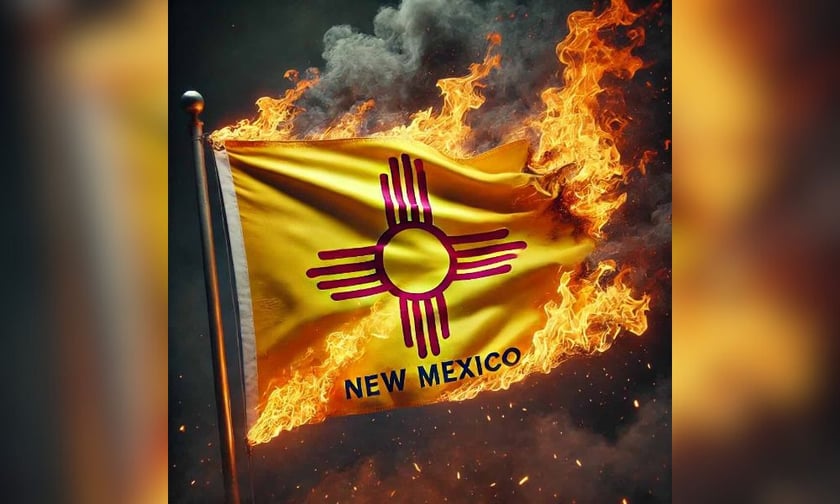

New Mexico Gov. Michelle Lujan Grisham’s proposal to create a state-run fire insurance program has stalled before it could gain traction in the legislature. Instead of moving forward with legislation, the governor’s office has opted to commission a study on the feasibility of such a program after failing to secure a legislative sponsor.
During her State of the State address, Lujan Grisham highlighted the growing crisis in fire insurance, citing increasingly destructive wildfires in New Mexico and neighboring states. With insurers retreating from high-risk areas, many homeowners find coverage either unavailable or prohibitively expensive.
“Fires spurred by climate change have also ravaged communities in our state, testing our patience and resilience as we struggle under the weight of natural disasters in our backyards,” Lujan Grisham said in her address. “As if the fires themselves aren’t difficult enough, getting insurance protection is becoming impossible, either because it’s simply no longer available or exorbitantly expensive.”
Her proposed plan, envisioned as a state-backed insurance provider similar to New Mexico’s workers’ compensation fund, aimed to offer coverage outside of the private market. The program would have been separate from the Fair Access to Insurance Requirements (FAIR) Plan, which has served as the insurer of last resort since 1969. However, without legislative backing, the administration has chosen to shift toward conducting a study instead.
“The governor will keep pursuing this idea, but it won’t happen this session,” spokesperson Michael Coleman confirmed in an email.
The decision comes amid broader legislative efforts to address wildfire risks and insurance instability in the state. Just last month, the Senate Conservation Committee unanimously advanced Senate Bill 33, the Wildfire Prepared Act, which focuses on proactive mitigation measures to protect communities and, in turn, stabilize the insurance market.
With much of New Mexico labeled as “at-risk” for wildfires, insurers have become increasingly hesitant to underwrite policies in vulnerable regions. Areas like Ruidoso, which see frequent wildfires, have experienced sharp premium hikes and policy cancellations. Some companies have entirely withdrawn from the state or significantly scaled back coverage.
Senator Harlan Vincent (R-Ruidoso), a co-sponsor of SB 33, expressed confidence that the legislation could lead to lower insurance costs by making properties less susceptible to wildfires.
“You’re going to see a lot of the insurance prices go down and insurance companies are going to want to insure your home because they know they’re safe,” Vincent said. “But, right now, it’s just so unpredictable because our forests are so thick.”
The bill, which amends the Forest Conservation Act, establishes a dedicated program and fund to support wildfire mitigation efforts. The initiative allocates $20 million from the state’s general fund for implementation, including hiring four full-time employees to oversee forestry initiatives and expanding the Fire Planning Task Force to 16 members. If successful, supporters estimate it could lower insurance premiums by up to 20%.
Although SB 33 has garnered widespread bipartisan support, Lujan Grisham’s separate plan for a state-backed insurance entity has faced a more challenging road. Skepticism remains about whether the state should assume financial risk typically borne by private insurers.
For now, the governor’s decision to commission a study suggests an effort to gather data and build consensus before revisiting the idea in a future session. At the same time, New Mexico’s insurance market remains in flux, with wildfires growing more frequent and the cost of coverage continuing to rise.
While the study may eventually lead to legislative action, the immediate focus in Santa Fe remains on passing SB 33 and other mitigation efforts aimed at making insurance more accessible through risk reduction. Whether these measures will be enough to reverse the exodus of insurers like American National from the state remains to be seen.
